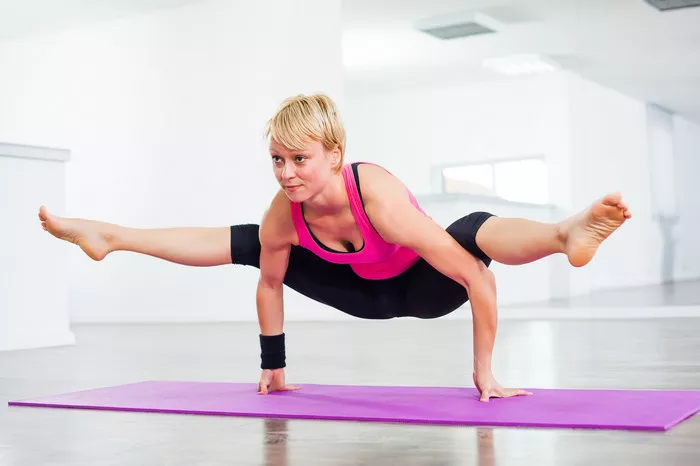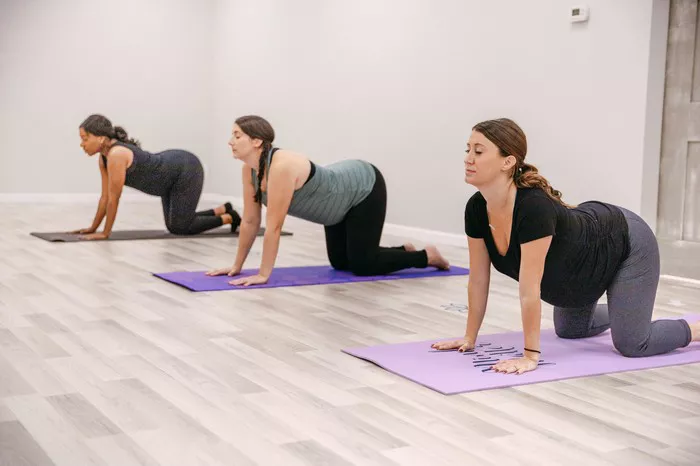Heated Vinyasa Yoga, often referred to as Hot Vinyasa, combines the flowing movements and breath-synchronization of traditional Vinyasa Yoga with the added element of heat. This practice has gained immense popularity for its numerous physical, mental, and spiritual benefits. In this comprehensive article, we will delve into everything you need to know about Heated Vinyasa Yoga, from its origins and benefits to tips for practice and safety considerations.
Origins and Philosophy of Vinyasa Yoga
Vinyasa Yoga is rooted in the ancient Indian practice of yoga, with its origins tracing back thousands of years. The term “Vinyasa” is derived from the Sanskrit word “nyasa,” meaning “to place,” and the prefix “vi,” meaning “in a special way.” Thus, Vinyasa can be translated as “to place in a special way,” which refers to the conscious alignment of breath and movement.
The modern practice of Vinyasa Yoga evolved from the teachings of T. Krishnamacharya and his students, including K. Pattabhi Jois, who developed Ashtanga Vinyasa Yoga. Vinyasa Yoga emphasizes the importance of linking breath with movement, creating a dynamic and meditative flow that enhances physical strength, flexibility, and mental focus.
The Concept of Heat in Yoga
The incorporation of heat in yoga practice is not new. Bikram Choudhury popularized heated yoga in the 1970s with his Bikram Yoga, a series of 26 postures practiced in a room heated to 105°F (40.6°C) with 40% humidity. The idea behind practicing yoga in a heated environment is to mimic the warm climate of India, where yoga originated, and to facilitate deeper stretching and detoxification through sweating.
Heated Vinyasa Yoga typically involves practicing in a room heated to around 90-95°F (32-35°C). The heat is intended to warm up the muscles quickly, increase heart rate, and enhance cardiovascular conditioning. This creates a challenging yet invigorating practice that combines the benefits of Vinyasa flow with the advantages of a heated environment.
See Also: How Does Hot Yoga Help You Lose Weight?
Benefits of Heated Vinyasa Yoga
1. Enhanced Flexibility and Mobility
The heat in a Heated Vinyasa class helps to warm up the muscles, ligaments, and tendons more quickly than in a non-heated environment. This increased warmth allows for greater flexibility and range of motion, enabling practitioners to move deeper into poses and experience enhanced mobility.
2. Detoxification
Sweating is one of the body’s natural ways of detoxifying. The increased perspiration in a heated yoga class helps to flush out toxins, cleanse the skin, and improve overall organ function. This detoxifying effect can leave practitioners feeling refreshed and rejuvenated after class.
3. Improved Cardiovascular Health
The heat and dynamic nature of Vinyasa flow elevate the heart rate, providing an excellent cardiovascular workout. Regular practice can improve cardiovascular endurance, increase circulation, and promote better heart health.
4. Mental Clarity and Focus
The combination of heat and flow in Heated Vinyasa Yoga requires heightened concentration and presence. The focus on breath and movement helps to quiet the mind, reduce stress, and enhance mental clarity. Practitioners often report a sense of mental calm and emotional balance after practice.
5. Strength and Conditioning
Heated Vinyasa Yoga is a full-body workout that targets multiple muscle groups. The continuous flow of movements builds strength, endurance, and muscular conditioning. Core strength, in particular, is emphasized, leading to improved posture and overall body stability.
6. Stress Relief
The physical exertion and focus required in Heated Vinyasa Yoga can be a powerful stress reliever. The practice encourages the release of endorphins, the body’s natural “feel-good” hormones, which can help to alleviate anxiety and promote a sense of well-being.
Preparing for a Heated Vinyasa Yoga Class
1. Hydration
Proper hydration is crucial before, during, and after a Heated Vinyasa class. Drink plenty of water throughout the day leading up to your practice to ensure you are well-hydrated. Consider bringing an electrolyte-rich beverage to replenish minerals lost through sweat.
2. Appropriate Attire
Wear lightweight, moisture-wicking clothing to keep cool and comfortable during class. Avoid heavy or restrictive fabrics that can retain heat and make movement difficult. Consider wearing a headband or sweatband to keep perspiration out of your eyes.
3. Mat and Towel
A high-quality, non-slip yoga mat is essential for heated classes to provide stability and grip. Additionally, bring a large towel to place over your mat and a smaller towel to wipe away sweat. Some practitioners prefer to use a yoga towel specifically designed for hot yoga.
4. Arrive Early
Arriving early to class allows you to acclimate to the heated environment and settle into your space. It also gives you time to inform the instructor of any injuries or concerns you may have.
Essential Elements of a Heated Vinyasa Yoga Class
1. Breath (Pranayama)
Breath is the foundation of Vinyasa Yoga. Practitioners are encouraged to use Ujjayi breath, a deep, audible breath that helps to regulate the body’s internal heat and maintain a steady rhythm throughout the practice. Focusing on the breath also aids in concentration and mindfulness.
2. Flow (Vinyasa)
A key characteristic of Vinyasa Yoga is the seamless flow from one pose to another, synchronized with the breath. This continuous movement creates a dynamic, dance-like practice that builds heat, increases heart rate, and promotes cardiovascular health.
3. Sun Salutations (Surya Namaskar)
Sun Salutations are often used as a warm-up sequence in Heated Vinyasa classes. These sequences involve a series of poses performed in a flowing, repetitive manner, helping to build internal heat and prepare the body for more intense asanas.
4. Asanas (Postures)
Heated Vinyasa classes typically include a variety of standing, seated, and balancing postures. These asanas are designed to build strength, flexibility, and balance. The heat allows for deeper stretching and increased mobility.
5. Cool Down and Savasana
The final portion of a Heated Vinyasa class involves cooling down with gentle stretches and restorative poses. This is followed by Savasana, a relaxation pose where practitioners lie down and focus on deep relaxation and integration of the practice.
Tips for a Safe and Effective Practice
1. Listen to Your Body
Pay attention to your body’s signals and practice within your limits. If you feel dizzy, lightheaded, or overheated, take a break, drink water, and rest in Child’s Pose. It’s essential to honor your body’s needs and avoid pushing too hard.
2. Stay Hydrated
Drink water before, during, and after class to stay hydrated. Consider sipping water throughout the practice to replenish fluids lost through sweat.
3. Use Props
Props such as blocks, straps, and bolsters can be helpful for modifying poses and ensuring proper alignment. Don’t hesitate to use props to support your practice and prevent injury.
4. Pace Yourself
Heated Vinyasa Yoga can be physically demanding. Pace yourself and take breaks as needed. Focus on maintaining a steady breath and avoid rushing through the poses.
5. Communicate with Your Instructor
Inform your instructor of any injuries, medical conditions, or concerns before class. They can provide modifications and guidance to ensure a safe and effective practice.
Common Myths and Misconceptions
1. Heated Vinyasa is Only for Advanced Practitioners
While Heated Vinyasa Yoga can be challenging, it is accessible to practitioners of all levels. Instructors often offer modifications and variations to accommodate beginners and advanced students alike.
2. Sweating Equals Detoxification
While sweating helps to eliminate toxins, it is not the only way the body detoxifies. The liver, kidneys, and digestive system play significant roles in detoxification. Sweating in a heated yoga class can complement these processes but is not a substitute for overall healthy living.
3. You Must Be Flexible to Practice Heated Vinyasa Yoga
Flexibility is not a prerequisite for practicing Heated Vinyasa Yoga. The practice itself helps to improve flexibility over time. Beginners are encouraged to start where they are and gradually work towards greater flexibility and strength.
4. Heated Vinyasa is Dangerous
When practiced mindfully and with proper precautions, Heated Vinyasa Yoga is safe for most people. It is essential to listen to your body, stay hydrated, and follow the guidance of a qualified instructor to avoid injury.
Conclusion
Heated Vinyasa Yoga is a powerful practice that combines the dynamic flow of Vinyasa Yoga with the benefits of a heated environment. It offers numerous physical, mental, and spiritual benefits, including enhanced flexibility, detoxification, improved cardiovascular health, mental clarity, and stress relief. By preparing adequately, listening to your body, and practicing mindfully, you can safely enjoy the transformative effects of Heated Vinyasa Yoga. Whether you are a seasoned yogi or a beginner, Heated Vinyasa Yoga can be a rewarding and invigorating addition to your wellness routine.
Related topics:

















